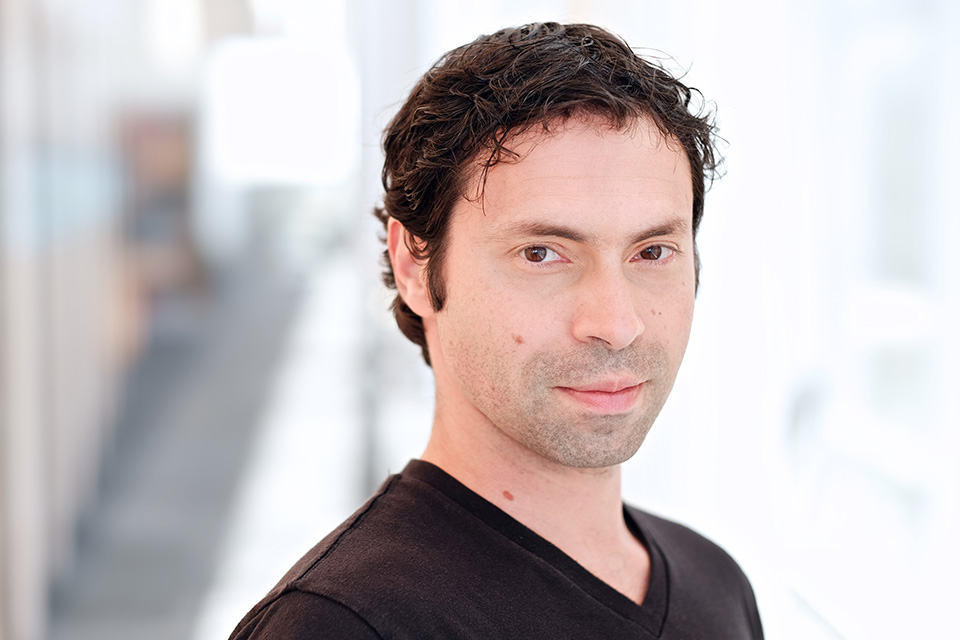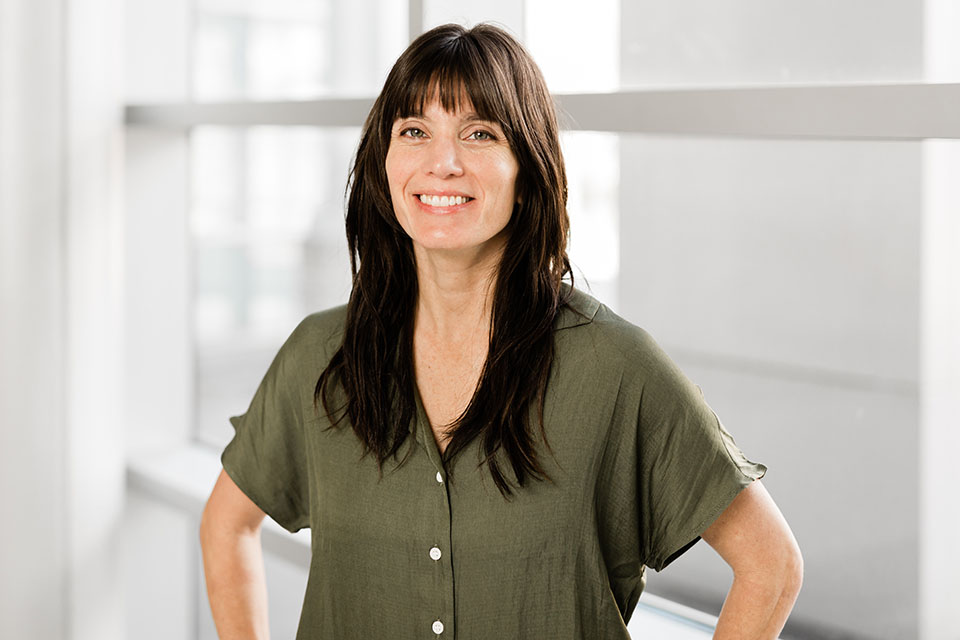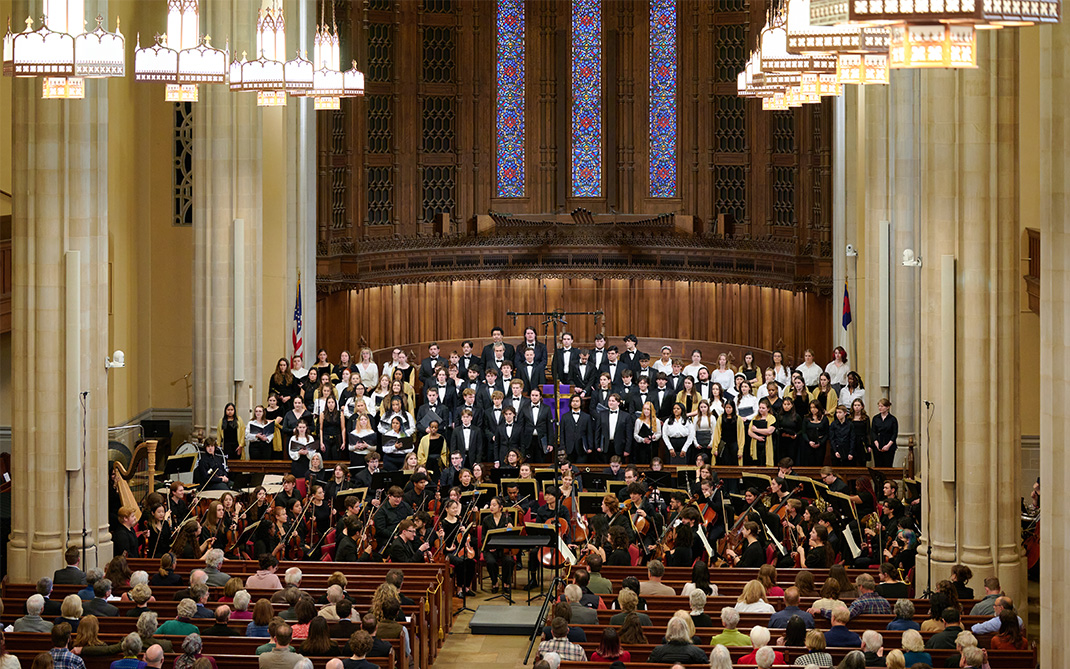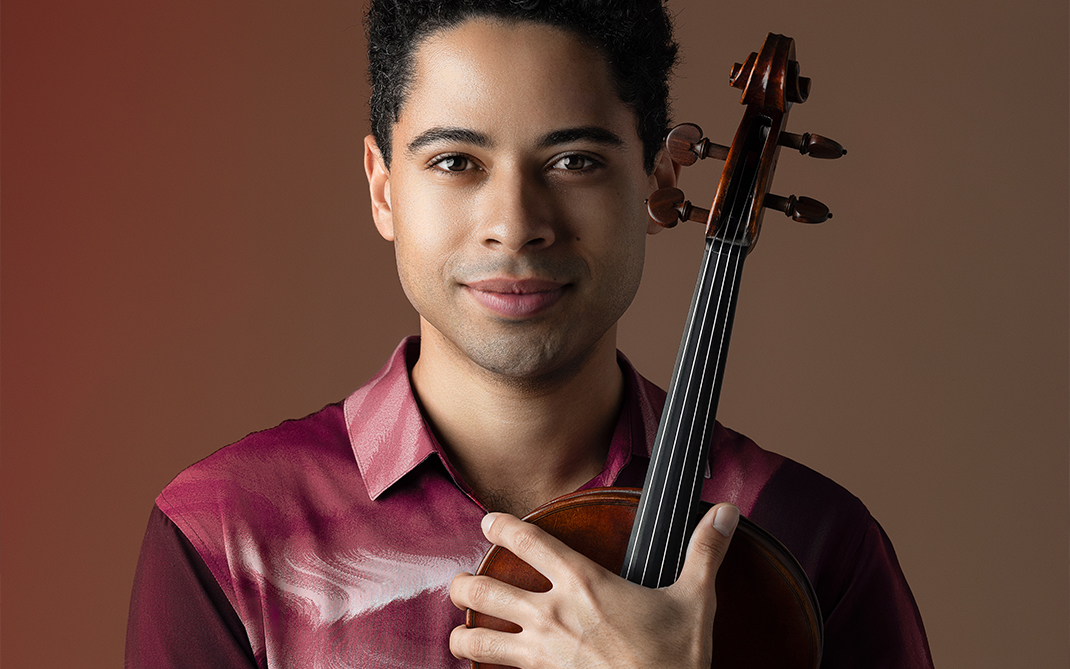Winter Dance features classics and new choreography
The University of North Carolina School of the Arts will present Winter Dance beginning Thursday, Feb. 21, showcasing the world premiere of a contemporary ballet by faculty member Ilya Kozadayev, along with masterworks by Douglas Dunn, George Balanchine and Martha Graham.
Performances will be at 7:30 p.m. Thursday through Saturday, Feb. 21-23, with a 2 p.m. matinée on Sunday, Feb. 24 at the Stevens Center, 405 W. Fourth St. Tickets are $20, $15 for students with a valid ID. Order tickets online or call 336-721-1945.
Winter Dance features Kozadayev’s “Dream(s)pace…” danced to Max Richter’s 2012 re-composition of Vivaldi’s famed “The Four Seasons”; Balanchine’s “Concerto Barocco” (1941) staged by Nilas Martins; Graham’s “Maple Leaf Rag” (1990) staged by former Graham principal dancer Maurizio Nardi; and “Pulcinella” (1980) by Dunn, staged by faculty member Kira Blazek-Ziaii. Dunn and Blazek-Ziaii will give a pre-curtain talk from 6:30 until 7 p.m.at the Feb. 22 performance.
We like to have both a strong foundation in the classics and in new choreography. That way, the students learn to take on any style. That’s the kind of dancer we have to train because in today’s dance world, every company is doing everything.
Dean of Dance Susan Jaffe
“There’s a beautiful mixture of old and new,” said Susan Jaffe, Dean of the School of Dance. “We like to have both a strong foundation in the classics and in new choreography. That way, the students learn to take on any style. That’s the kind of dancer we have to train because in today’s dance world, every company is doing everything.”
“Dream(s)pace…” (Ilya Kozadayev)
Kozadayev, a soloist with Houston Ballet from 2003 to 2013, is now making his mark as a choreographer, having created works for several professional companies. “Dream(s)space…,” for 10 dancers, marks the first time that he has choreographed a work on UNCSA students.
Kozadayev said the premise behind Richter’s music inspired the choreography that emerged in “Dream(s)pace...”

Faculty member Ilya Kozadayev will premiere “Dream(s)pace…” for Winter Dance
“Richter’s music retains the essence and familiarity of Vivaldi while sounding fresh to the current ear,” Kozadayev said. “Thus, my aim in choreography became similar – not to re-choreograph an existing work, but to retain the essence of classical ballet vocabulary and wrap it in my own contemporary package.”
That package is designed to take students out of their comfort zones by exposing them to a wide range of aesthetics, technical elements and movement vocabulary, said Kozadayev, who began teaching at UNCSA in fall 2017.
“Maple Leaf Rag” (Martha Graham)
In “Maple Leaf Rag,” dancers move to Scott Joplin’s music both around and on a joggling board, which features a lengthy bouncy plank held up by two upright supports.
Joggling boards are popular porch décor in the South Carolina low country, and were historically known as courting benches, Jaffe said.
“It’s hilarious,” Jaffe said. “It’s the only humorous ballet that Graham ever did. In this work, she created parodies in her signature moves and her own work.”
The UNCSA students appearing in the “Winter Dance” performance of “Maple Leaf Rag” are “getting the information right from the horse’s mouth,” with Nardi staging the piece, Jaffe said.

Guest artist Maurizio Nardi stages Martha Graham's "Maple Leaf Rag."
Nardi, who began dancing with the Graham company in 2002, has appeared in numerous performances of “Maple Leaf Rag,” both in the chorus and as a lead.
“Martha has an uncompromising approach to the movement, direct and full of energy,” Nardi said. “The key in this particular piece, where there is not a story or a dramatic through line…is clarity, in the shapes and the timing. The spine is pulled up with energy constantly.”
Nardi staged Graham’s “Panorama” for Spring Dance 2017.
“Pulcinella” (Douglas Dunn)
Dunn, whose choreography reflects a range of influences and aesthetics, created this piece for the Paris Opera Ballet in 1980. It was restaged several times thereafter, including in 2009 for Douglas Dunn + Dancers, Dunn’s company. Blazek-Ziaii, now on the contemporary dance faculty at UNCSA, participated in that performance and has staged the one for Winter Dance.
In “Pulcinella,” 15 dancers move to Stravinsky’s score of the same name. Blazek-Ziaii said that there’s “only about 30 seconds of unison dancing” in Dunn’s whole ballet.

Faculty member Kira Blazek-Ziaii stages Douglas Dunn's "Pulcinella" for Winter Dance.
“That means each dancer basically dances a solo in relationship to everyone else,” she said. “Sometimes it’s chaos, sometimes duets emerge, and other times it’s so very simple.”
Another challenge: Stravinsky’s “Pulcinella” score, like other ballet music he composed, is difficult for dancers to count.
“I personally never counted it, but memorized it and could sing it from beginning to end,” Blazek-Ziaii said. “I make the dancers listen to it without dancing, just to hear all the different things happening in the music.”
“Concerto Barocco” (George Balanchine)
“Concerto Barocco” was on the first program that New York City Ballet (NYCB) presented, in 1948. NYCB describes the piece as “music made visible,” with lead dancers, usually ballerinas, each depicting a solo part in Bach’s Double Violin Concerto in D Minor.
Guest artist Nilas Martins, a former principal dancer with New York City Ballet, is staging “Concerto Barocco” for Winter Dance. For him, the piece epitomizes music and choreography “coming together in perfect harmony,” particularly in the part of the ballet that corresponds to the concerto’s third movement.
In Balanchine's 'Concerto Barocco' music and choreography come together in perfect harmony.
Nilas Martins
Martins also lauded the ballet’s “Largo” section. If this is executed correctly, he said, the one male dancer in “Concerto Barocco” partners with a lead ballerina in ways that reveal “an elegance and love for her well-being and comfort that can be breathtakingly stunning.”
Martins said that his time at NYCB is influencing “everything” he’s teaching the UNCSA students about “Concerto Barocco,” including its energy, its speed of dancing and its quick and precise pointe work.
Jaffe said, “It’s so good for our students to work at lightning speed, to develop the kind of precision this piece requires.”
February 05, 2019




